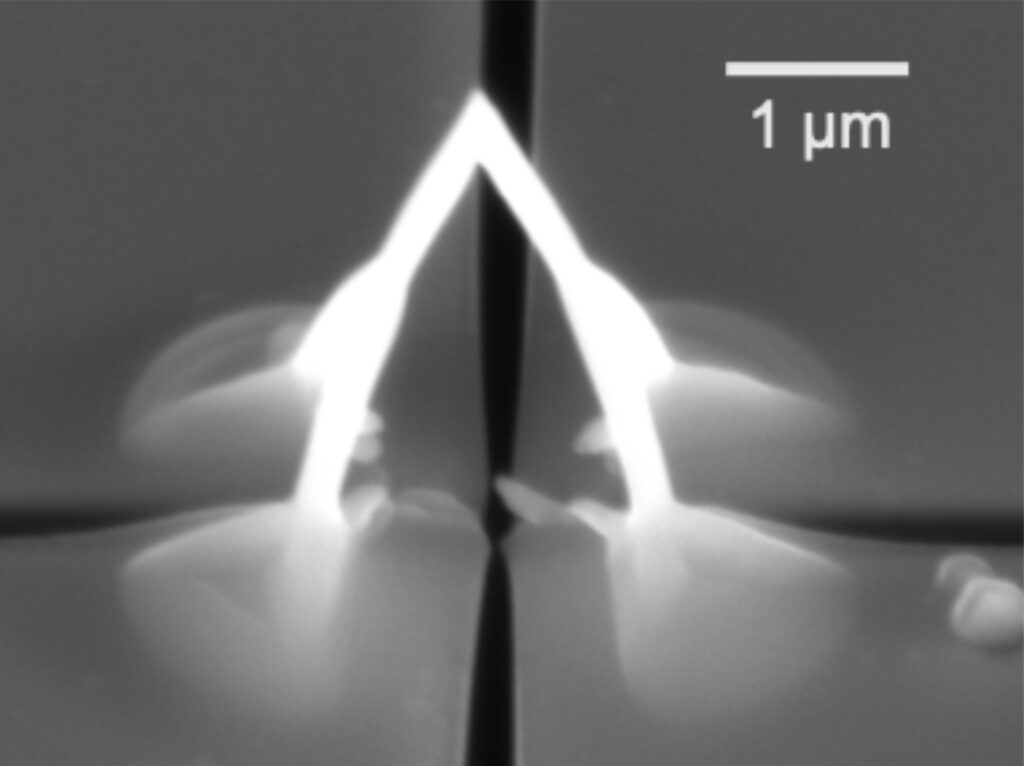The move from two to three dimensions can have a significant impact on how a system behaves, whether it is folding a sheet of paper into a paper airplane or twisting a wire into a helical spring. At the nanoscale, 1,000 times smaller than a human hair, one approaches the fundamental length scales of, for example, quantum materials.
At these length scales, the patterning of nanogeometries can lead to changes in the material properties itself—and when one moves to three dimensions, there come new ways to tailor functionalities, by breaking symmetries, introducing curvature, and creating interconnected channels.
Despite these exciting prospects, one of the main challenges remains: how to realize such complex 3D geometries, at the nanoscale, in quantum materials? In a new study, an international team led by researchers at the Max Planck Institute for Chemical Physics of Solids have created three-dimensional superconducting nanostructures using a technique similar to a nano-3D printer.
They achieved local control of the superconducting state in a 3D bridge-like superconductor, and could even demonstrate the motion of superconducting vortices—nanoscale defects in the superconducting state—in three dimensions. The work has been published in the journal Advanced Functional Materials.
Superconductors are materials that are renowned for their ability to exhibit zero electrical resistance and expel magnetic fields. This striking behavior arises from the formation of so-called Cooper pairs—bound pairs of electrons that move coherently through the material without scattering.
“One of the main challenges involves gaining control over this superconducting state at the nanoscale, which is key for the exploration of novel effects, and the future development of technological devices” explains Elina Zhakina, postdoctoral researcher at the MPI-CPfS, and first author of the study.
When patterning superconductors in 3D nanogeometries, the international team, involving researchers from Germany (MPI CPfS, IFW) and Austria (TU Wien, University of Vienna), were able to locally control the superconducting state—i.e., “switching off” the superconductivity in different parts of the nanostructure.
This coexistence of superconducting and “normal” states can lead to quantum mechanical effects, such as so-called weak links, used for example for ultra-sensitive sensing. However, until now, such control has typically required the design of structures, for example, in planar thin films, where the coexistence of states is predetermined.
“We found that it is possible to switch on and off the superconducting state in different parts of the three-dimensional nanostructure, simply by rotating the structure in a magnetic field,” said Claire Donnelly, Lise Meitner Group leader at the MPI-CPfS and last author of the work. “In this way, we were able to realize a ‘reconfigurable’ superconducting device.”
This realization of reconfigurable functionality offers a new platform for building adaptive or multi-purpose superconducting components. This, along with the ability to propagate defects of the superconducting state, opens the door to complex superconducting logic and neuromorphic architectures, setting the stage for a new generation of reconfigurable superconducting technologies.


